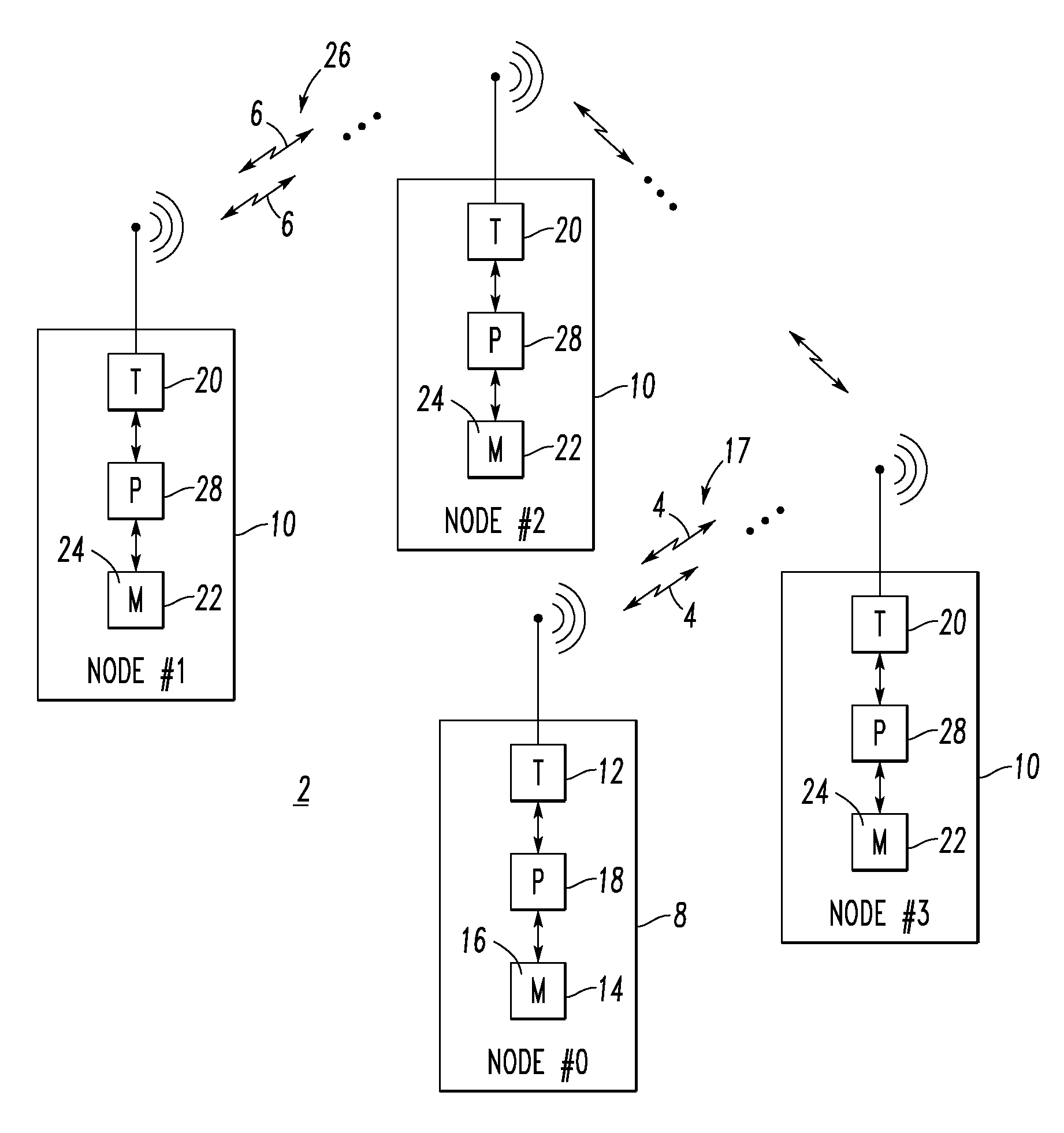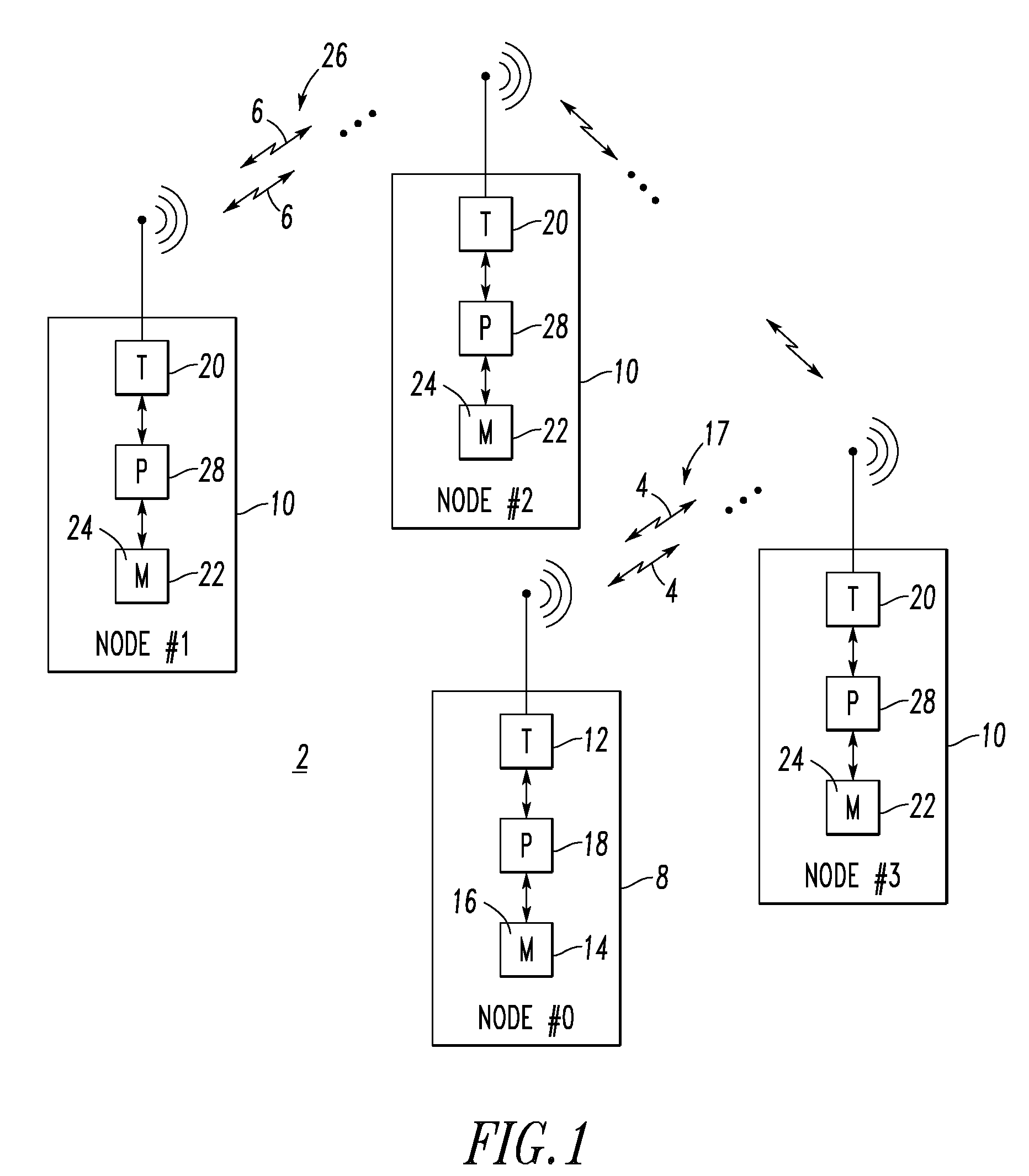Packet sniffer node and system including the same to assess wireless communication performance
a wireless communication and packet sniffer technology, applied in the field of wireless communication performance assessment systems, can solve problems such as changing the interfering signal strength, unable to reproduce field conditions in the lab, and unable to reproduce low-power wireless systems that function correctly at the present tim
- Summary
- Abstract
- Description
- Claims
- Application Information
AI Technical Summary
Benefits of technology
Problems solved by technology
Method used
Image
Examples
example 1
[0076]The disclosed system 2 measures wireless performance and can be used, for example, for wireless network site surveys. The system 2, which is a layer-two test, significantly reduces the cost and increases the information yield of site surveys.
example 2
[0077]The system 2 is truly wireless and there is no wired data connection for experiment control and no wired power connection. The system nodes 8,10 operate without any wiring, in order that the nodes can be placed in active industrial settings where wiring is impractical or impossible. Hence, no artificial ground plane is formed among the test nodes 8,10 that could otherwise distort the measurements and lead to a false assessment of communication performance. Furthermore, the system 2 has a relatively very simple operation: (1) place the nodes 8,10 as desired; (2) install the pre-programmed memory 14,22 (e.g., without limitation, compact flash cards); and (3) turn on the nodes 8,10. This operation makes the system 2 attractive for industrial testing.
example 3
[0078]As shown in FIG. 2, each system node 30 of the system 2 (FIG. 1) has a single user input 32 (e.g., button; on / off switch) and it does not matter in what order the nodes are turned on. All configuration information for a test is stored in removable media (e.g., without limitation, a compact flash card 34). The system nodes, such as 30, synchronize and execute the test automatically. If a node is shut down during the test (e.g., to exchange a battery 36 or compact flash card 34; by accident), then when it is turned back on it will automatically rejoin the test. If any node, other than the “master node”8 (node #0 of FIG. 1) is turned off or disabled, the test continues with no change other than the loss of transmitted packets from the disabled node. The corresponding schedule 16,24 may be transferred from the compact flash card 34 to the memory 14,22 of the corresponding node 8,10.
[0079]The system nodes 8,10,30 of FIGS. 1 and 2 can make successful measurements even when the packe...
PUM
 Login to View More
Login to View More Abstract
Description
Claims
Application Information
 Login to View More
Login to View More - R&D
- Intellectual Property
- Life Sciences
- Materials
- Tech Scout
- Unparalleled Data Quality
- Higher Quality Content
- 60% Fewer Hallucinations
Browse by: Latest US Patents, China's latest patents, Technical Efficacy Thesaurus, Application Domain, Technology Topic, Popular Technical Reports.
© 2025 PatSnap. All rights reserved.Legal|Privacy policy|Modern Slavery Act Transparency Statement|Sitemap|About US| Contact US: help@patsnap.com



